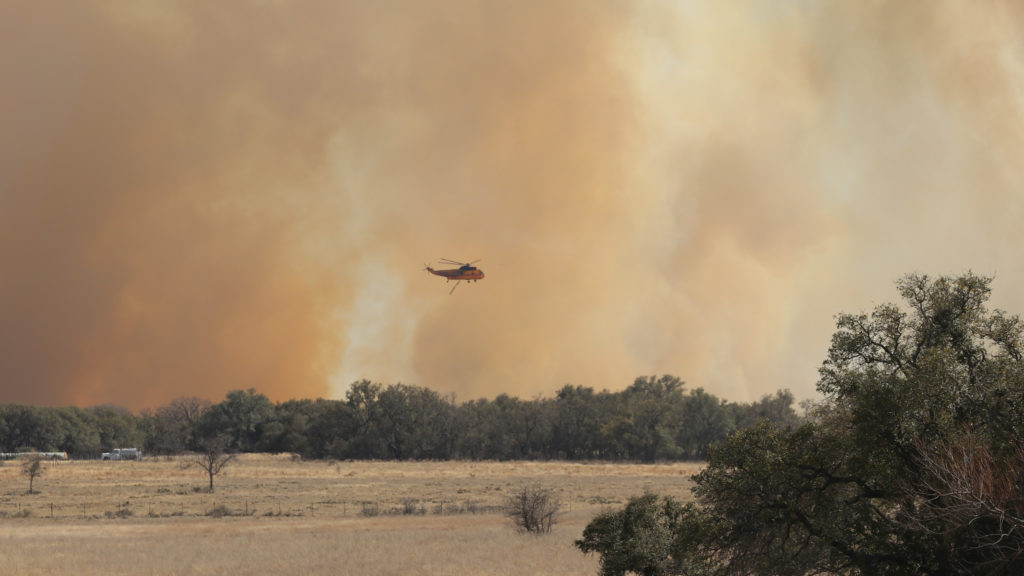
Texas A&M Forest Service has increased the State Preparedness Level to Level 4 as the result of a significant increase in wildfire activity across the state, potential for large fires and the increased commitment of state and local resources to fires.
Preparedness Levels in state are dictated by fuel and weather conditions, fire activity and fire suppression resource availability. Level 5 is the highest level of wildland fire activity and indicates heavy resource commitment to fires locally.
“The decision to move to a Preparedness Level 4 indicates that the complexity of wildfires across Texas is increasing to where they require more time, personnel and equipment to contain,” said Wes Moorehead, Texas A&M Forest Service Fire Chief.
Due to the above normal wildfire activity levels and elevated fire conditions across the state, all prescribed fires conducted and lead by Texas A&M Forest Service have been postponed until conditions improve.
This week, the fire environment was characterized by critical to extreme weather conditions and extremely dry grass that supported the growth of several large wildfire across the state.
Over the past 7 days, state, federal and local fire resources have been extremely busy responding to 192 wildfires that burned 173,559 acres.
In addition to the more than 300 firefighters from Texas A&M Forest Service, more than 200 TIFMAS firefighters as well as personnel from 28 states are positioned across the state to respond.
“We want to ensure that the state has adequate resources to protect Texas’ citizens and natural resources from wildfire,” said Moorehead. “We are working with other states to mobilize additional fire resources to Texas for assistance.”
Texas A&M Forest Service and Texas Intrastate Fire Mutual Aid System (TIFMAS) firefighters continue to increase containment on 10 active wildfires across the state, including the Borrega Fire in Kleberg County, the Canadian River Bottom Fire in Roberts/Hemphill counties and the Los Angeles Fire in La Salle County.
The Borrega Fire in Kleberg County is an estimated 46,000 acres and 20% contained. The wildfire ignited on the afternoon of March 30 and spread quickly due to windy and dry conditions. Last night, the county implemented voluntary evacuations for residents in the Ricardo and Riviera communities. In addition to local first responders, 42 state and federal personnel are assigned to the incident, including three bulldozers, 16 fire engines and eight aircraft including an air attack platform and single engine air tankers. Additional resources have been mobilized to support suppression efforts on the wildfire.
The Los Angeles Fire in La Salle County is an estimated 3,500 acres and 30% contained. The wildfire ignited on the afternoon of March 30 burning in grass and brush. Residents were evacuated from Fowlerton last night, but the community is not immediately threatened. Additional resources, including aviation, are arriving on scene today to assist with suppression efforts.
The Canadian River Bottom Fire in Roberts and Hemphill counties is 39,568 acres and 40% contained. The wildfire ignited on March 29 off Highway 60 between Miami and Canadian. During the initial hours, the fire was very active and spread rapidly across the landscape. The fire moved northeast crossing HWY 83 and 33 but stayed south of the town of Canadian. Forward progression of the wildfire was stopped, and fire resources are continuing to patrol the area and improve containment lines around the fire perimeter.
Stay wildfire aware. If a wildfire is spotted, immediately contact local authorities. A quick response can help save lives and property.
For current conditions and wildfire outlook, read the Texas Fire Potential Outlook https://bit.ly/3kemhbG.
Texas A&M Forest Service does not own any aviation resources but instead uses federal aviation contracts through the U.S. Forest Service and Bureau of Land Management for all firefighting aircraft.